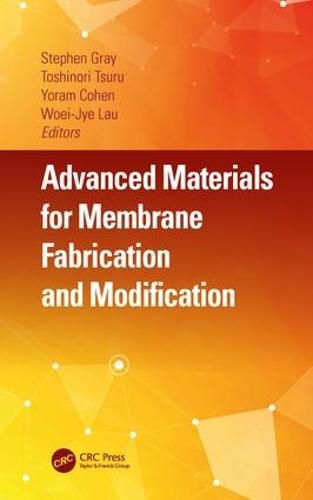Readings Newsletter
Become a Readings Member to make your shopping experience even easier.
Sign in or sign up for free!
You’re not far away from qualifying for FREE standard shipping within Australia
You’ve qualified for FREE standard shipping within Australia
The cart is loading…






Membranes are an energy efficient separation technology that are now the basis for many water treatment and food processing applications. However, there is the potential to improve the operating performance of these separations and to extend the application of membranes to energy production, gas separations, organic solvent-based separations, and biomedical applications through novel membrane materials. This book contains 20 chapters written by leading academic researchers on membrane fabrication and modification techniques and provides a comprehensive overview on the recent developments of membrane technology.
Membranes can be manufactured from a range of materials including polymeric compounds, and ceramic materials, and both these materials are considered in the book. There are 5 chapters on water and wastewater membranes that cover the fabrication of thin film (TFC) composite membranes for nanofiltration(NF)/reverse osmosis (RO)/forward osmosis (FO) applications, stimuli responsive membranes, electrospun membranes, porous ceramic membranes, and polymeric ultrafiltration (UF) manufacture and modification.
There are another 6 chapters on gas separation that consider carbon membranes, zeolite membranes, silica template and metal oxide silica membranes, TFC membranes, silica membranes, and metal organic framework (MOF) membranes. Zeolite membranes are also considered for organic solvent applications, as are solvent-resistant membranes manufactured by phase inversion, ceramic-supported composite membranes, and ceramic NF membranes. The emerging areas of membranes for energy and biomedical applications have 3 and 2 chapters, respectively. Energy applications consider ion exchange membranes for use in fuel cells, membranes for electrodialysis, and membranes for use in microbial fuel cells. For biomedical applications the chapters focus on hemodialysis membranes and redox responsive membranes.
$9.00 standard shipping within Australia
FREE standard shipping within Australia for orders over $100.00
Express & International shipping calculated at checkout
Membranes are an energy efficient separation technology that are now the basis for many water treatment and food processing applications. However, there is the potential to improve the operating performance of these separations and to extend the application of membranes to energy production, gas separations, organic solvent-based separations, and biomedical applications through novel membrane materials. This book contains 20 chapters written by leading academic researchers on membrane fabrication and modification techniques and provides a comprehensive overview on the recent developments of membrane technology.
Membranes can be manufactured from a range of materials including polymeric compounds, and ceramic materials, and both these materials are considered in the book. There are 5 chapters on water and wastewater membranes that cover the fabrication of thin film (TFC) composite membranes for nanofiltration(NF)/reverse osmosis (RO)/forward osmosis (FO) applications, stimuli responsive membranes, electrospun membranes, porous ceramic membranes, and polymeric ultrafiltration (UF) manufacture and modification.
There are another 6 chapters on gas separation that consider carbon membranes, zeolite membranes, silica template and metal oxide silica membranes, TFC membranes, silica membranes, and metal organic framework (MOF) membranes. Zeolite membranes are also considered for organic solvent applications, as are solvent-resistant membranes manufactured by phase inversion, ceramic-supported composite membranes, and ceramic NF membranes. The emerging areas of membranes for energy and biomedical applications have 3 and 2 chapters, respectively. Energy applications consider ion exchange membranes for use in fuel cells, membranes for electrodialysis, and membranes for use in microbial fuel cells. For biomedical applications the chapters focus on hemodialysis membranes and redox responsive membranes.